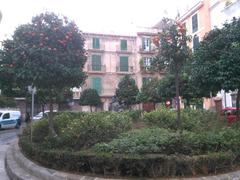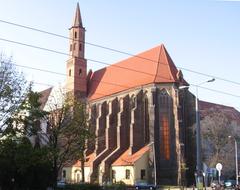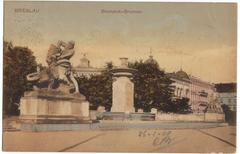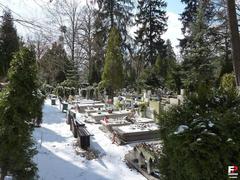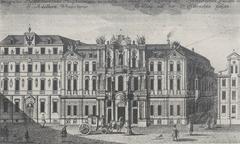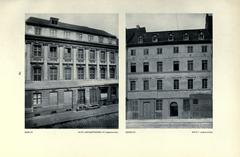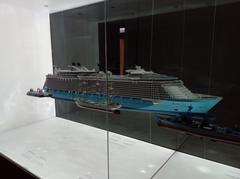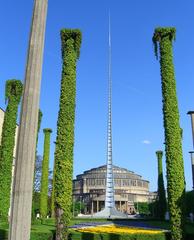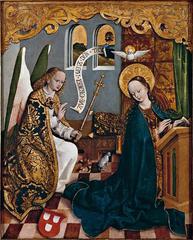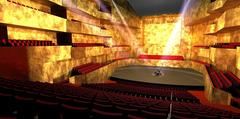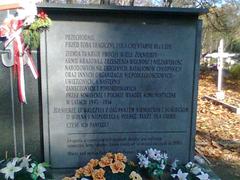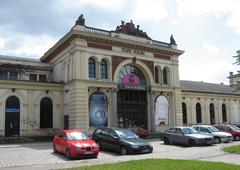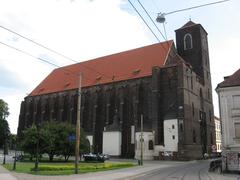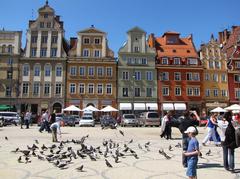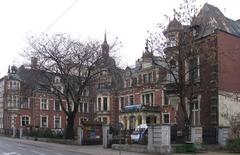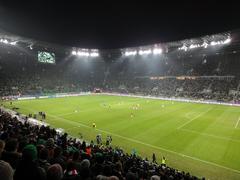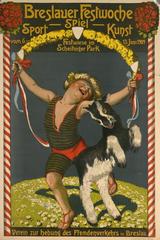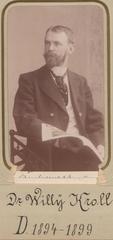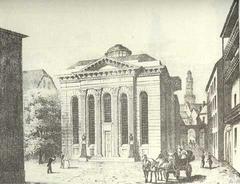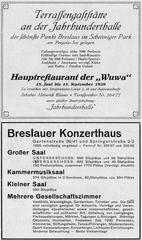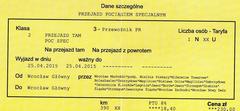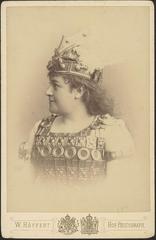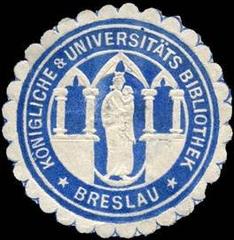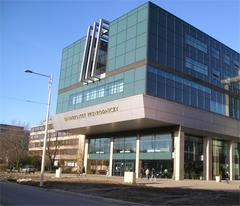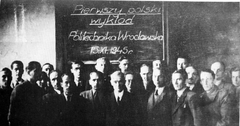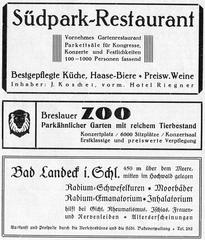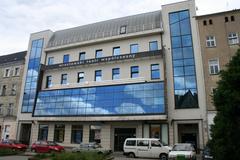
Visiting Pergola in Wrocław: Hours, Tickets, and Tips
Date: 19/07/2024
Introduction
The Pergola in Wrocław, Poland, is a captivating blend of historical architecture and modern attractions that make it a must-visit site. Constructed in 1913 as part of the Centennial Hall complex, designed by the esteemed architect Max Berg, the Pergola commemorates the 100th anniversary of the Battle of Leipzig, a pivotal event in European history (UNESCO). Stretching over 640 meters, the semi-circular colonnade is one of the longest pergolas in Europe and is adorned with climbing plants, primarily wisteria, which create a natural canopy offering shade and aesthetic appeal. Over the years, the Pergola has evolved into a cultural and social hub, hosting various events such as concerts, festivals, and exhibitions. A notable modern addition is the Wrocław Multimedia Fountain, inaugurated in 2009, which features spectacular shows of water, light, and music and attracts thousands of visitors, especially from late spring to early autumn. Whether you’re a history enthusiast, architecture lover, or simply in search of a serene place for relaxation, the Pergola in Wrocław offers a multifaceted experience that is sure to enchant every visitor (Wrocław Official Tourism Website).
Table of Contents
- Introduction
- History of the Pergola
- Visitor Information
- Cultural and Social Impact
- Preservation Efforts
- Future Prospects
- Conclusion
- FAQ
History of the Pergola
Origins and Construction
The Pergola in Wrocław is an iconic structure that dates back to the early 20th century. It was constructed as part of the Centennial Hall complex, designed by the renowned architect Max Berg, to commemorate the 100th anniversary of the Battle of Leipzig, a significant event in European history. Completed in 1913, the Pergola was intended to serve as a decorative and functional element of the surrounding gardens.
Architectural Design
The design of the Pergola is a testament to the architectural innovation of the early 1900s. It features a semi-circular colonnade that stretches for approximately 640 meters, making it one of the longest pergolas in Europe. The structure is composed of reinforced concrete, a material that was relatively new at the time and allowed for greater flexibility in design. The columns are adorned with climbing plants, creating a natural canopy that provides shade and enhances the aesthetic appeal of the area.
Historical Significance
The Pergola holds significant historical value, not only as part of the Centennial Hall complex but also as a symbol of Wrocław’s cultural and architectural heritage. During its early years, the Pergola and the surrounding gardens were a popular destination for both locals and tourists. The area was used for various public events, including concerts, exhibitions, and social gatherings.
World War II and Post-War Period
The outbreak of World War II had a profound impact on Wrocław and its architectural landmarks, including the Pergola. The city was heavily bombed, and many structures were damaged or destroyed. However, the Pergola managed to survive the war with relatively minor damage. In the post-war period, Wrocław became part of Poland, and efforts were made to restore and preserve its historical sites. The Pergola underwent several renovations to repair war damage and maintain its structural integrity.
Modern Era and Renovations
In recent decades, the Pergola has undergone significant renovations to ensure its preservation for future generations. One of the most notable projects was the restoration carried out in the early 2000s, which included the reinforcement of the concrete structure and the replanting of climbing plants. Additionally, the area around the Pergola was enhanced with modern amenities, such as walking paths, benches, and lighting, making it a more attractive destination for visitors.
Multimedia Fountain
One of the most significant additions to the Pergola area in recent years is the Wrocław Multimedia Fountain, which was inaugurated in 2009. The fountain is located in the central basin of the Pergola and features a spectacular display of water, light, and music. It is one of the largest multimedia fountains in Europe, with over 300 water jets and a state-of-the-art sound system. The fountain operates from late spring to early autumn, attracting thousands of visitors who come to enjoy the mesmerizing shows (Wrocław Multimedia Fountain).
Visitor Information
Visiting Hours
The Pergola is open to visitors year-round, with the best time to visit being during the late spring to early autumn when the Wrocław Multimedia Fountain is in operation.
Tickets
Admission to the Pergola is free, but tickets are required for special events and guided tours. For more information on ticket prices and availability, visit the official Wrocław Tourism website.
Travel Tips
- Accessibility: The Pergola is wheelchair accessible, and there are several ramps and smooth pathways.
- Nearby Attractions: Don’t miss the Centennial Hall, Japanese Garden, and Wrocław Zoo, all located within walking distance of the Pergola.
- Best Photographic Spots: Capture stunning photos of the colonnade, the Multimedia Fountain, and the lush gardens.
Cultural and Social Impact
The Pergola continues to play a vital role in the cultural and social life of Wrocław. It is a popular venue for various events, including concerts, festivals, and outdoor exhibitions. The combination of historical architecture and modern attractions makes it a unique and vibrant space that appeals to people of all ages. The Pergola and the surrounding gardens are also a favorite spot for leisurely walks, picnics, and photo opportunities, contributing to the overall quality of life in the city.
Preservation Efforts
Preserving the Pergola and its historical significance is a priority for the city of Wrocław. The local government, along with various cultural and heritage organizations, has implemented measures to protect and maintain the structure. These efforts include regular inspections, maintenance work, and public awareness campaigns to educate residents and visitors about the importance of preserving this architectural gem.
Future Prospects
Looking ahead, the Pergola is expected to remain a key attraction in Wrocław, drawing visitors from around the world. Plans are in place to further enhance the area with additional amenities and cultural programs. The ongoing commitment to preservation and innovation ensures that the Pergola will continue to be a cherished landmark for generations to come.
Conclusion
The Pergola in Wrocław is more than just a historical monument; it’s a vibrant cultural hub that continues to enchant visitors from around the world. Whether you’re a history buff, an architecture enthusiast, or simply looking for a beautiful place to relax, the Pergola has something for everyone. Be sure to include it in your itinerary when visiting Wrocław.
For more information on the history and significance of the Pergola in Wrocław, you can visit the official Wrocław Tourism website.
Call to Action
Stay updated on the latest events and attractions in Wrocław by downloading our mobile app, checking out other related posts, or following us on social media.
FAQ
Q: What are the visiting hours for the Pergola?
A: The Pergola is open to visitors year-round, with the best time to visit being during the late spring to early autumn when the Wrocław Multimedia Fountain is in operation.
Q: Is there an admission fee to visit the Pergola?
A: Admission to the Pergola is free, but tickets are required for special events and guided tours.
Q: What are some nearby attractions to the Pergola?
A: Nearby attractions include the Centennial Hall, Japanese Garden, and Wrocław Zoo.
Q: Is the Pergola wheelchair accessible?
A: Yes, the Pergola is wheelchair accessible, with several ramps and smooth pathways.
Q: Where can I find more information on visiting the Pergola?
A: For more information, visit the official Wrocław Tourism website.





